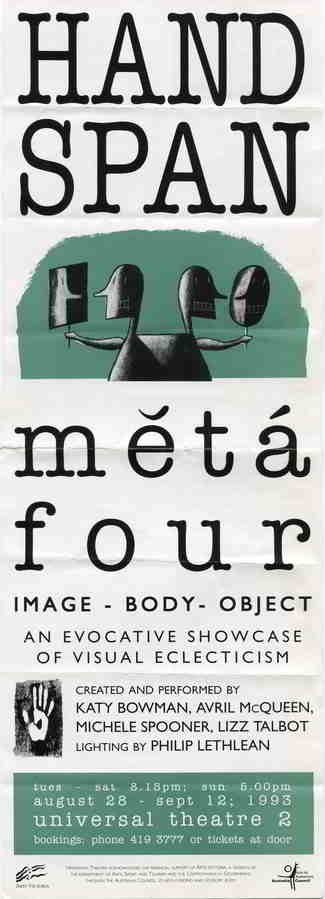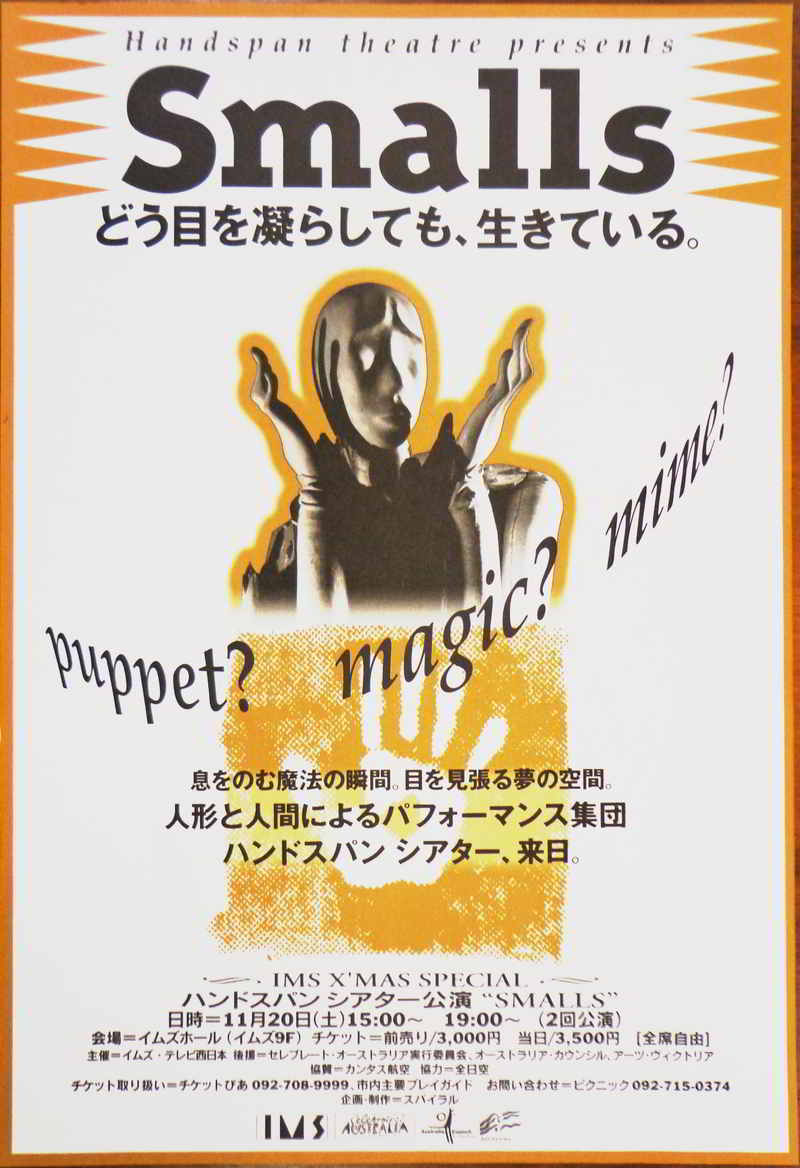
Vignette productions featured the work of individual Handspan members and were the fruit of the company's visual theatre 'laboratory' where the form and nature of puppetry-based drama was explored; its techniques honed; and its production process refined.
Creative development periods were essential to the production process of all of Handspan’s work, not only for their advantage to performance outcomes. Refinement of manipulation techniques and meaningful gesture and their seamless execution was a continuing journey throughout all company projects.
Periods of creative development are important in the making of any new theatrical work. Script readings and rough staging are trialed, alternatives emerge and working drafts for rehearsal are confirmed. In visual theatre incremental development is crucial. Visual theatre ‘scripts’ begin as storyboards, with or without accompanying texts. Imagery peoples the stage. Its design and functional construction, based on storyboard outlines, itself then informs interpretation and action. New dramatic possibilities and limitations emerge from the objects themselves.
Vignette acts began as exploratory concepts devised by artists working alone or in twos and threes. In this experimental performance environment, they delved into ideas and innovative possibilities for visual communication. Some concepts matured quickly, others never came to light. Laboratory experimentation did not always lead to full production. It was not necessarily the objective.
These projects allowed puppeteers to work with ideas and images to find their meeting points and explore the strengths and weaknesses of both concept and techniques. They attracted puppeteers who were adapt at design and construction of their animated images as well as their manipulation and performance. New discoveries in technique and style contributed to full length company works and fostered ensemble collaboration and co-operation both in their small partnerships and in the skill of Handspan's membership.
Vignette productions were collected works for an adult public that showcased the art of visual image manipulation. Wordless they offered audiences moments of visual poetry, sometimes poignant, sometimes dark, or funny, or confronting. Conceptually, they were born from their imagery and its possibilities of movement and gesture.
- The format first appeared in Smalls, devised by Peter J.Wilson and Michele Spooner as a result of their masterclass experience with French puppetmaster, Phillipe Genty in Charelesviile-Mezieres in northern France..
- Michele Spooner created Moments and led the collaborations that became Women Alone and Metafour
- Ken Evans originally created his production No Right Angles in Paradise with magician Sam Angelico. A series of short sequences, the work was included in Handspan vignette repertoire from 1989 and performed with Women Alone in a full-length production.
- The place of puppetry in cabaret was the focus in Duck and Below the Belt developed from John Rogers interest in the humorous (and raunchy) antics of object characters.
- Tutta Casa Letto E Chiesa (1985), created by Carmelina Di Guglielmo was the first production presented by Handspan that had been individually produced by one of its members. Unlike the productions above, the work was in no way an exploration of puppetry and its techniques, but it was created from Carmelina's ongoing interest to explore her Italian cultural heritage through her work. It was also, in fact a play in four short acts, or vignettes.

